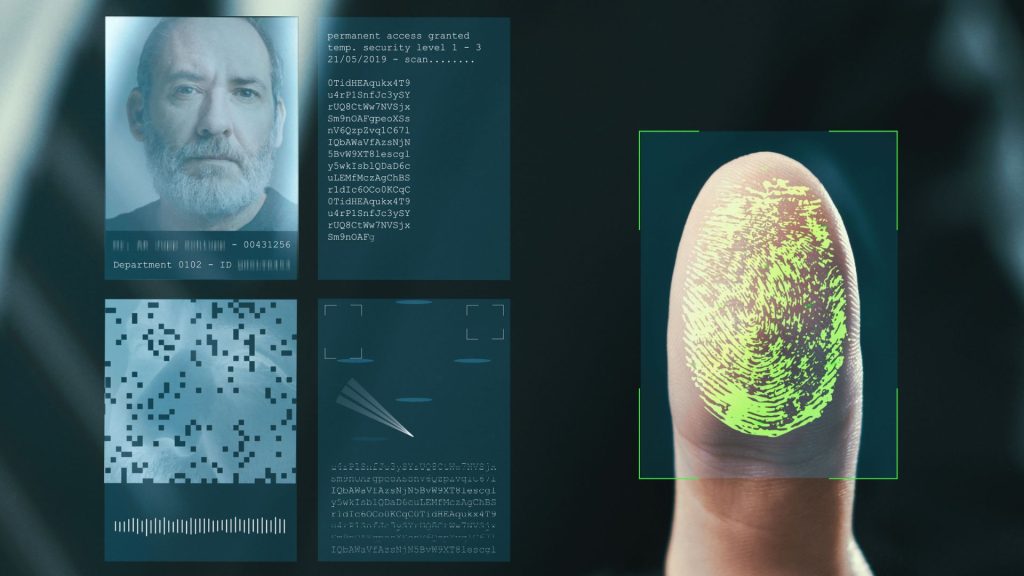The evolution of biometrics has reshaped the landscape of security and identity verification, providing enhanced protection against fraud while streamlining user authentication processes.
The biometric industry is evolving to support businesses and effectively prevent crimes from happening in the best way possible. Over the past few years, customer identity theft has become one of the most common crimes. It takes place when identity thieves steal victims’ personal information for unauthorized financial transactions.
Losses due to fraud have increased by 13% in the years 2019 to 2020 respectively. Therefore, global industries have been deploying biometric authentication systems to prevent financial crimes.
Biometric is an automated customer recognition method for verifying the identities of individuals based on behavioral and physiological traits such as fingerprints, voice, facial features, DNA, retina, iris, and others.
After stealing customer identities, they engage in illegal purchases or apply for loans in the victim’s name which are threatening to global businesses as it puts a strain on sensitive customer data and business revenues.
The Evolution of Biometrics
As mentioned above, biometrics usually fall under two categories: Biological and Behavioural biometric characteristics. Biological traits include individuals’ physiological and physical features, whereas behaviors include actions performed by individuals such as voice patterns.
Fingerprint Scanners
Fingerprint scanners have seemed to be everywhere and are used by everyone. They aren’t limited to businesses but smart devices are also deploying fingerprint scanning for unlocking devices.
According to Spiceworks, fingerprint scanning is the most common type of biometric authentication which is used by almost 57% of global companies. They are a type of biological biometric system as fingerprints are secured with the individual’s live participation however, they can also be collected when left on an object, this system is used by law enforcement agencies to trace criminals.
Facial Biometric Recognition
In facial biometric authentication, the live presence of individuals is ensured. Just like other biometric solutions, facial recognition analyses the unique facial features of individuals and matches them with the available databases for authentication.
Facial biometric authentication is considered a more convenient way of identifying criminals among crowds. Imposter crimes are on the rise, according to FTC, they ripped $667 million last year off of Americans.
Voice Recognition
Voice recognition is another biometric verification process that is extensively used for identifying and authenticating customers. Most of the financial institutions use voice recognition to verify their customers and transaction processing requests.
Signature Recognition
Signature recognition includes the identification of an individual by analyzing the handwriting of customers. Signature recognition involves static and dynamic signature analysis. Static signature analysis compares one scanned signature to either another scanned signature or an ink form signature. Whereas, the Dynamic signature uses behavioral characteristics that a customer displays while making a signature. Digital signature scanners are regularly used by banks and retail outlets.
DNA
DNA scans are mainly used by the law enforcement authorities to identify potential suspects. DNA uses a segment of individuals for verification purposes.
Hand Geometry
Identification through the use of hand geometry measures the shape of customer’s hand and it is considered as easier to use when several customers are accessing the system regularly. It is also considered that the accuracy rate of hand geometry process is high.
Iris and Retina-Based Biometric Authentication
Iris-based biometric include authentication using iris scanning. The retina-based biometric analysis of the layer of blood vessels at the back of the eye is called the retina. Iris scanners may work if the customer is wearing the glasses and it is easier to apply.
The retina scanning is considered accurate but it may not require a customer to look at a single point for the purpose of verification and may also not be convenient if the customer is wearing the glasses.
Further, the biometric authentication may identify individuals through writing patterns, navigation patterns like the movement of fingers on mouse pads, physical movements of customers, and their engagement patterns with verification technology.
Final Thoughts
The biometric industry has rapidly advanced, offering a plethora of solutions to counter the surge in identity theft and unauthorized financial transactions, which have seen a notable 13% spike between 2019 and 2020. While traditional methods like fingerprint scanning remain ubiquitous, newer systems including facial and voice recognition have emerged as crucial tools in authenticating identities, especially amid rising imposter crimes. Additionally, innovations in signature recognition, DNA analysis, hand geometry, and iris or retina scanning showcase the industry’s commitment to diverse and robust methods of security.
Beyond the mainstream, intriguing techniques using writing and navigation patterns further underscore the depth and breadth of the sector’s pursuit of foolproof identification and security. The biometric evolution signifies a global stride towards a safer and more secure future, with businesses and individuals alike benefiting from enhanced safeguards.




